The fetish that giantologists have for recycling out-dated concepts of race would give the flat earth people a run for their money in a competition for attaching the most weight to the worst idea. If I wanted to argue for the existence of giants and I wanted to still sound like a reasonable person, I would avoid basing my arguments for giants on racial typologies that went out style along with slavery, eugenics, and World War II-era Nazism. But giantologists, for the most part, seem to be largely unfettered by the desire to sound reasonable. Or the desire to understand the history, context, and implications of the racial concepts they are so quick to employ. Or the desire to be correct in facts, citations, quotations . . . you get the idea.
There are a lot of examples of modern giant enthusiasts throwing around the term "race" in reference to their assertions about giants (Google "race of giants" and you'll see what I mean). I don't think I've ever run across an example of a giant enthusiast actually defining what he means by "race," but I gather that the term is generally used to denote a population that is genetically different from other populations and has shared physical characteristics that can be reliably used to discriminate its members from those of other "races" (basically a 19th and early 20th century definition of "race"). Defining the shared physical characteristics for this "giant race" that we are supposed to believe existed has proven tricky for giant enthusiasts. Other than being tall, what shared features does this "race of giants" have? Double rows of teeth? No, not really (see this post, this one, this one, etc.). Six fingers and six toes along with "double rows of teeth"? Not so far (see this post). So what's left of our "giant" race once we kick those legs out from under the stool?
Not much. Some tall people here and there?
Ah, but wait: there's still all that bad 19th and earth 20th century scientific racism to mine for "evidence" in the quest to define a "race" of giants. It's old and out-dated, so it's fair game.
Fritz Zimmerman is in love with what he terms a "giant race called the Dinaric." His web pages contain many assertions about the giant "Dinaric people" of Europe and the Levant spreading into the New World, and it is to the "Dinaric race" that he attributes the construction of the Early and Middle Woodland earthen mounds of eastern North America. Here is his story from the Europe side:
"The Dinaric spread through conquest out of the Caucasus into central Germany to Northern France. From France, the Dinarics advanced into the British Isles. Another group of seafaring Dinarics is found throughout the Mediterranean. There is evidence that the Dinarics were in the Levant at the time of the Amorites. Several of the Dinaric skulls were found in Palestine and Israel, that at first were believed to be Peruvian skulls, however, identical skulls were found and it was realized that these unique head shapes represented a different type of people. One of these skull was found in Damascus, within the realm of the Amorites and Og."
There are several different issues to unwrap here. What does "Dinaric" mean? How do you identify a "Dinaric skull"? How do we know these "Dinaric people" were giants? I wasn't familiar with the concept of a "Dinaric race," so I put some effort into trying to understand what this was about. Spoiler alert: there's no substance in the idea that "Dinaric" skulls can be used to identify a "race of giants." That's predictable. But the issue is interesting to me for a couple of reasons. First, it's useful as an example of the strangely haphazard way that giantologists employ discredited racial classifications to support their belief systems about giants. And second, it illustrates once again the shallowness of the scholarship that is uncovered when you scratch the surface of the "research" on giants.
The Origin and Development of the Concept of a "Dinaric Race"
The concept of a Dinaric race began with Joseph Deniker, back in the heyday of racial cartography in the late 1800s. In his book The Races of Man (1900), Deniker describes the Dinaric race as one of six principal races among the living peoples of Europe:
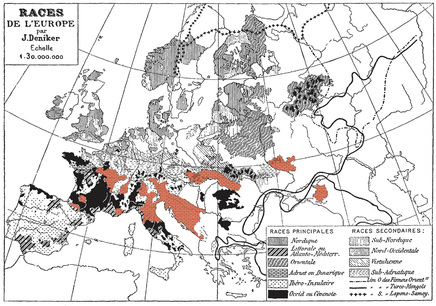 Deniker's (1900) map of the races of Europe showing the distribution of the Dinaric race (modified to highlight the distribution in red). Base map source: http://upload.wikimedia.org/wikipedia/commons/9/9b/Deniker%27s_Races_de_l%27Europe_%281899%29.jpg
Deniker's (1900) map of the races of Europe showing the distribution of the Dinaric race (modified to highlight the distribution in red). Base map source: http://upload.wikimedia.org/wikipedia/commons/9/9b/Deniker%27s_Races_de_l%27Europe_%281899%29.jpg Brachycephaly refers to head shape: a skull that is brachycephalic ("short-headed") is relatively short front-to-back. Note the "lofty stature:" about 5'8" tall.
In his effort to classify the living peoples of the world based (in part) on their physical characteristics, Deniker wrestled with the same basic issues that confront any scientist trying to define discrete "types" among populations that vary continuously. In the introduction to the volume, he recognized that variability in language, ethnicity, and culture were not isomorphic with biological variability, and that "races" did not form discrete units that could be reliably used to recognize populations. The "Dinaric race," then, was defined as a hypothetical physical "type" that could be recognized most clearly among the living peoples of southern Europe.
 Examples of people belonging to the Dinaric race, according to Hans F. K. Günther. Apparently, Fritz Zimmerman thinks these people are closely related to the builders of the Adena mounds.
Examples of people belonging to the Dinaric race, according to Hans F. K. Günther. Apparently, Fritz Zimmerman thinks these people are closely related to the builders of the Adena mounds. To the physical descriptions of the races of Europe, Günther added an assessment of their mental characteristics:
"The Dinaric man is characterized by a warm feeling for nature, a strong love of the home, and a spirit of creativeness in fashioning the surroundings to be the ordered expression of himself in houses, implements, customs, and forms of speech. He does not, however, turn his gifts so much to the vaster undertakings, to leadership in the most varied spheres of life, or to restless progress and strenuous competition. He lives more in the present than does the provident, foreseeing Nordic. The boldness of the Dinaric is rather one of bodily achievements; a real spiritual urge to conquest, such as often characterizes Nordic men, seems to be rarer. Characteristic of the Dinaric is an inclination to sudden outbursts, to quick anger, and to combativeness -- characteristics, however, which but stand out from the general level of a disposition that is on the whole good-tempered, cheerful, and friendly. But it is not mere chance that the predominantly Dinaric south-east of the German-speaking area (like the East with its East Baltic strain) is marked by a particularly high percentage of convictions for dangerous bodily wounding, and in general by a relatively high percentage of criminal convictions.
The Dinaric nature has a range of development decidedly narrower in every direction than that of the Nordic. The signs are wanting of any great mental acumen, or of stern determination. The spiritual outlook is narrower, though the will may be as strong. On the whole the Dinaric race represents a stock which is not seldom somewhat uncouth, with a rough cheerfulness, or even wit, and is easily stirred to enthusiasm; it has a gift for coarse repartee and vivid description, showing a decided knowledge of mankind and histrionic powers as a racial endowment. Business capacity, too, seems to be not rare. The gift for music, above all for song, is particularly pronounced. The predominantly Dinaric Alpine district is where German folk-songs most flourish. The gift of tongues, too, would seem more frequent in the Dinaric race. The sociableness of this race is a rough and noisy one; as between man and man it is generally sincere and upright. For mental capacity I would put the Dinaric race second among the races of Europe."
So there you have it: the Dinaric race has a lot going for it but, according to a future Nazi (Günther didn't join the Nazi party until 1932), just doesn't quite stack up to the Nordics. I'll bet you didn't see that one coming.
In his first chapter, Günther provided an explicit definition of race:
"A race shows itself in a human group which is marked off from every other human group through its own proper combination of bodily and mental characteristics, and in turn produces only its like."
He followed this definition with a clear statement that "Ethnology yields hardly any example of such a true-breeding human group." In reality, Günther said, there is a lot of mixture between the races. In the eyes of the Nazis, that obviously sets up a problem for the "best" of the races (the Nordic race), as any mixture with other, inferior races dilutes its qualities.
Anyway, another person worth mentioning on the Dinaric race issue is Carleton Coon, a University of Pennsylvania anthropologist perhaps most infamous for proclaiming as late as 1962 that the "five races" of humans had formed prior to the evolution of Homo sapiens. In Chapter XII of his (1939) book The Races of Europe, Coon gave his conclusions on the Dinaric "race:"
"Dinaricism is not a quality pertaining to a single race, it is a condition. This condition is common in Europe; it is also common in western Asia. Furthermore, it is not confined to the white racial stock; the principle of hybrid inheritance which produces Dinarics in Europe has also produced Papuans in New Guinea, the Arii aristocrats in Polynesia, and many American Indians."
Look carefully at what Coon is saying in that passage: even if you can identify a Dinaric "type" (based on skull morphology, for example), that type doesn't have any historical meaning. "Dinaric" skulls are found in many parts of the world in populations that are not related to one another.
My take on all of this is that the originator of the concept of a "Dinaric race" (Deniker), Nazi racial scientists (Günther), and one of the last American physical anthropologists who openly embraced racial classification (Coon) all agree that the term "Dinaric race" doesn't really describe a single people, or even mark a population that has a single origin. This is in direct contradiction to Zimmerman's argument that Dinaric skulls are "unique" and therefore can be used as a marker of a distinct population (and a giant one, to boot). I very seriously doubt Zimmerman knows something about the "Dinaric race" that Deniker, Günther, and Coon did not.
Günther
So how do these brachycephalic, noisy, 5'8" peoples spread across southern Europe become both biblical giants and the constructors of earthen mounds in eastern North America? How do the people of the Balkans become the Amorites, and how do the Amorites get to Kentucky and Ohio?
A Dinaric Skull in the Near East?
Zimmerman attempts to connect the "Dinaric race" to biblical giants by saying that a Dinaric skull was found in Damascus, near where Og and the Amorites lived (see the quote above). He doesn't provide a reference in the page I quoted, but elsewhere he says that a Dinaric skull "near the Damascus Gate at Jerusalem" was "discovered by Prof. Retzius, who described it in the Proceeding of the Royal Academy of Science, 1902."
There are a couple of errors here, and a bit of sleight of hand.
First is the location: note that it's the Damascus Gate at Jerusalem, not Damascus as Zimmerman says above.
Second, I found the original publication by searching on a sentence that Zimmerman quotes, and it's not a 1902 document. The passage he quotes is originally from an 1879 book titled The North Americans of Antiquity by John Thomas Short. In the section on "Head Flattening," that book describes a discussion of an artificially deformed skull from Austria described by "Prof. Retzius" in "The Proceedings of the Royal Academy of Stockholm in 1844" (that's a reference line within the work, not the reference of the work itself, and it's 1844, not 1902). Here is an 1855 paper by Retzius describing that skull and other artificially deformed crania.
Third, the deformed skull from near the Damascus Gate, which seems to be key to Zimmerman's attempt to connect the "Dinaric race" to the Amorites, was discovered in 1856 by J. Hudson Barclay and described in an 1859 paper by J. A. Meigs titled "Description of a deformed, fragmentary human skull : found in an ancient quarry-cave at Jerusalem : with an attempt to determine, by its configuration alone, the ethnical type to which it belongs." That paper does not illustrate the skull, and if you search for the term "Dinaric" within it you'll come up empty (Deniker, the originator of the term, wasn't even born until 1852). If you look at that paper, you'll see a lot of discussion trying to figure out the "ethnical type" to which the skull belongs. It's fragmentary, undated, artificially deformed, and not a "Dinaric skull." So much for that.
Maybe there's some other component to Zimmerman's argument that the "Dinaric race" is related to the Amorite "giants" of the Near East. As far as I can tell, however, the notion seems to be based primarily on a misreferenced, misunderstood paper about an artificially-deformed, fragmentary skull that was published decades before the concept of a "Dinaric race" was even formalized. If so, it's nonsense.
"Dinaric" Skulls in the Eastern Woodlands?
With the link between the "Dinaric race" and giants severed, identifying "Dinaric" skulls in the Eastern Woodlands becomes largely moot. But it's an interesting part of the story and worth mentioning.
The crucial component of this part of Zimmerman's argument seems to be the description of Adena skeletal remains as "brachycephalic." As discussed above, brachycephaly was one of the defining characteristics of the Dinaric "type." Adena skeletal remains were described as brachycephalic by Charles Snow in the 1940s and 1950s, when the definition and identification of physical "types" was still popular in physical anthropology in the United States. Many of the Adena skulls that Snow looked at were artificially deformed, heightening the impression of extreme brachycephaly. Some of the Adena were also described as relatively tall, even up to 7' or so.
What the Giantologists Got Wrong
The equation here just doesn't add up at all. The Adena skulls are brachycephalic (enhanced by artificial cranial deformation), brachycephaly is one of the characteristics of the "Dinaric race" in Europe, there was an artificially-deformed skull discovered in the Near East in 1856, ergo the earthen monuments of eastern North America were constructed by biblical giants? Is that the whole story?
If you detect a few missing connections in that line of reasoning, I'm right there with you. How a racial category constructed around the 5'8" people of southern Europe became the link between Og of the Old Testament and the Adena is beyond me. It's silly.
I think the main rabbit hole in this case is the uncritical acceptance of the racial typologizing and classification that was a mainstay of anthropology in the 19th and early 20th centuries. If you're going to embrace the same racial "science" as the Nazis, you're kind of setting yourself up for failure. That's pretty obvious. There's even a discussion on Stormfront (a white supremacist website) that complains that having writing about things like the "Dinaric race" on the forum "will make Stormfront a laughing stock."
The example of the "Dinaric race" should be a cautionary tale to anyone looking to use pre-World War II racial typologies to reconstruct population history, which is what Zimmerman attempts to do. To anyone paying attention, the description of "Dinaricism" as "not a quality pertaining to a single race" by one of last prominent racist theorists in mainstream American anthropology (Coon) would seem to throw a bucket of cold water on the idea that a link between the populations of Europe and North America could be recognized based on the identification of "Dinaric" skulls.
But I guess that's just another pesky detail (like the real story of the "Jerusalem skull)," and real giantologistis are not going let such trivia stand in the way of a good story. The "good story," of course, is one we've heard before: it's the Myth of the Moundbuilders all over again (i.e., the notion that white people, not Native Americans, were responsible for building the earthen monuments of eastern North America). What's new here is the attempt to use discredited racial "science" to somehow bridge the gaps of space and time between the New World and the Old, and between a "race of giants" and normal human variation. Haphazardly invoking antiquated racial typologies doesn't make the case stronger.
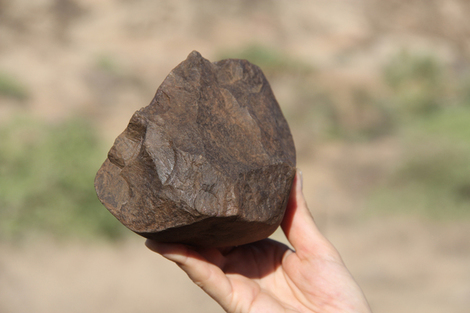
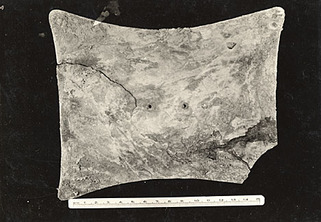
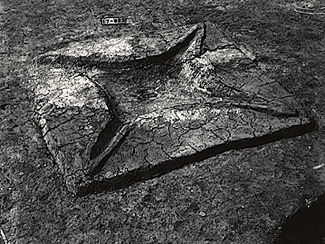
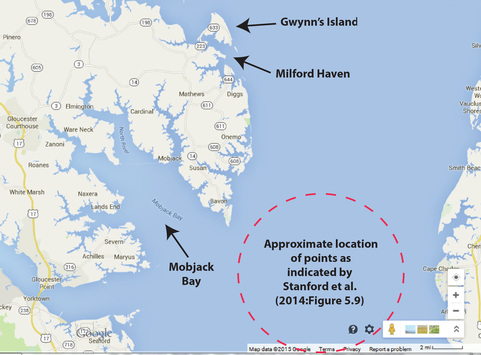
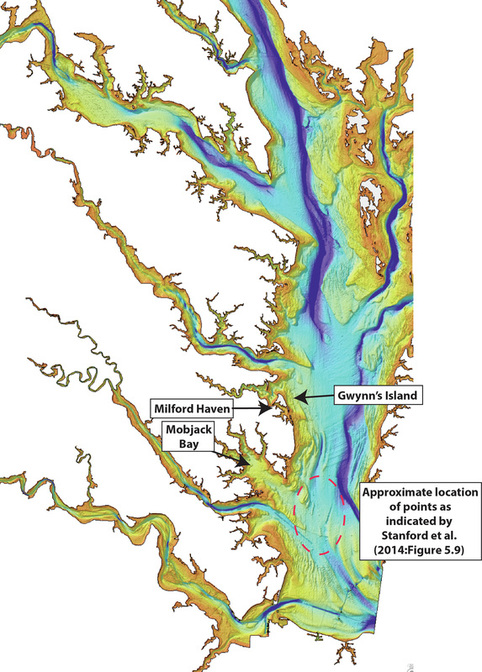


 RSS Feed
RSS Feed
